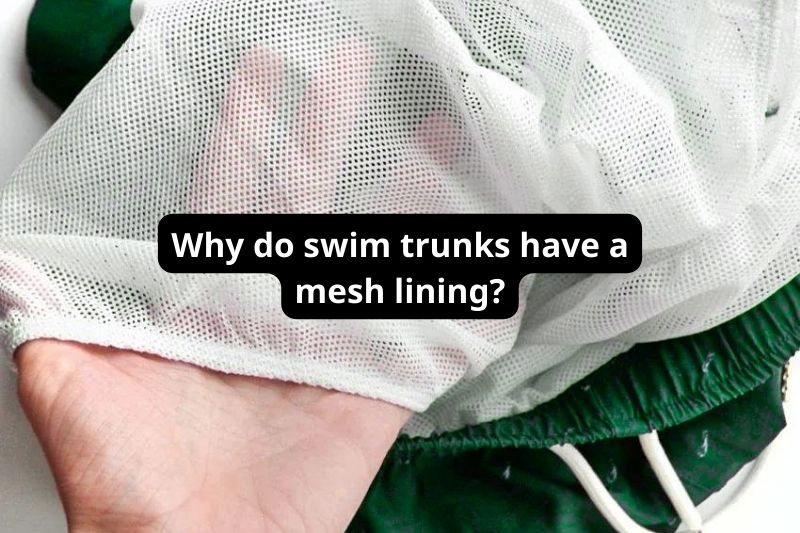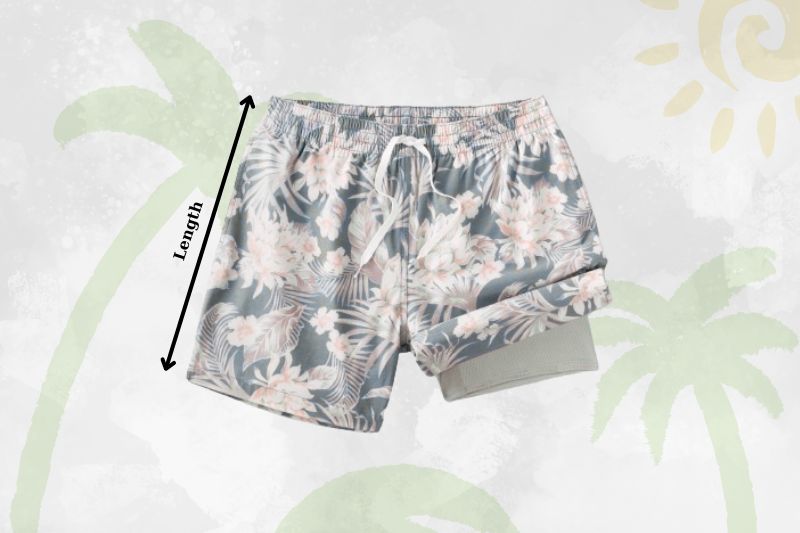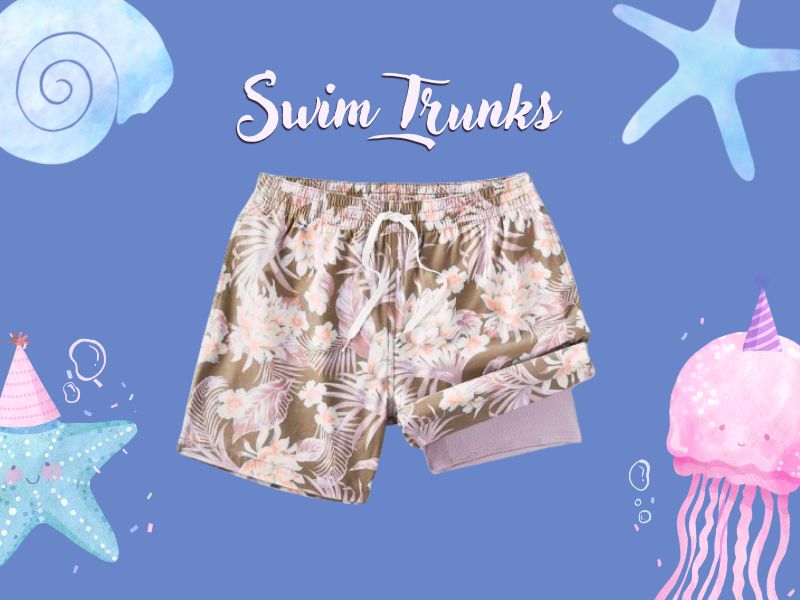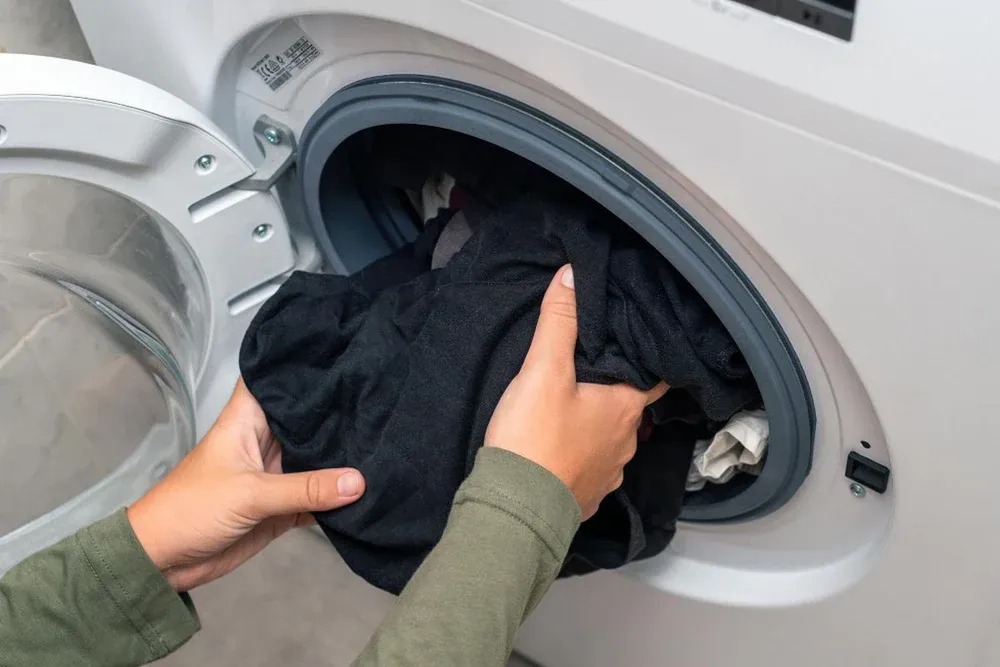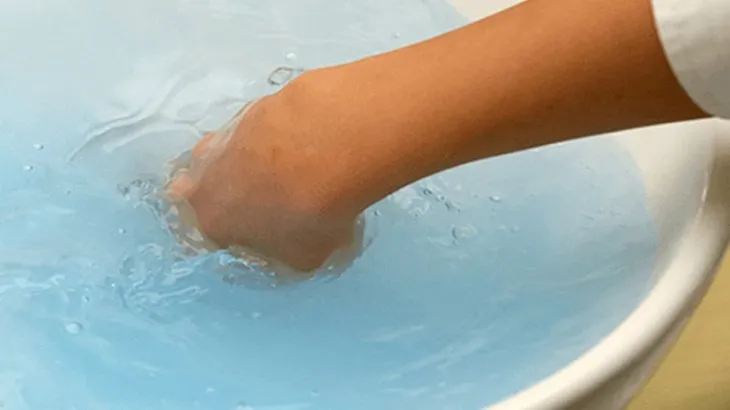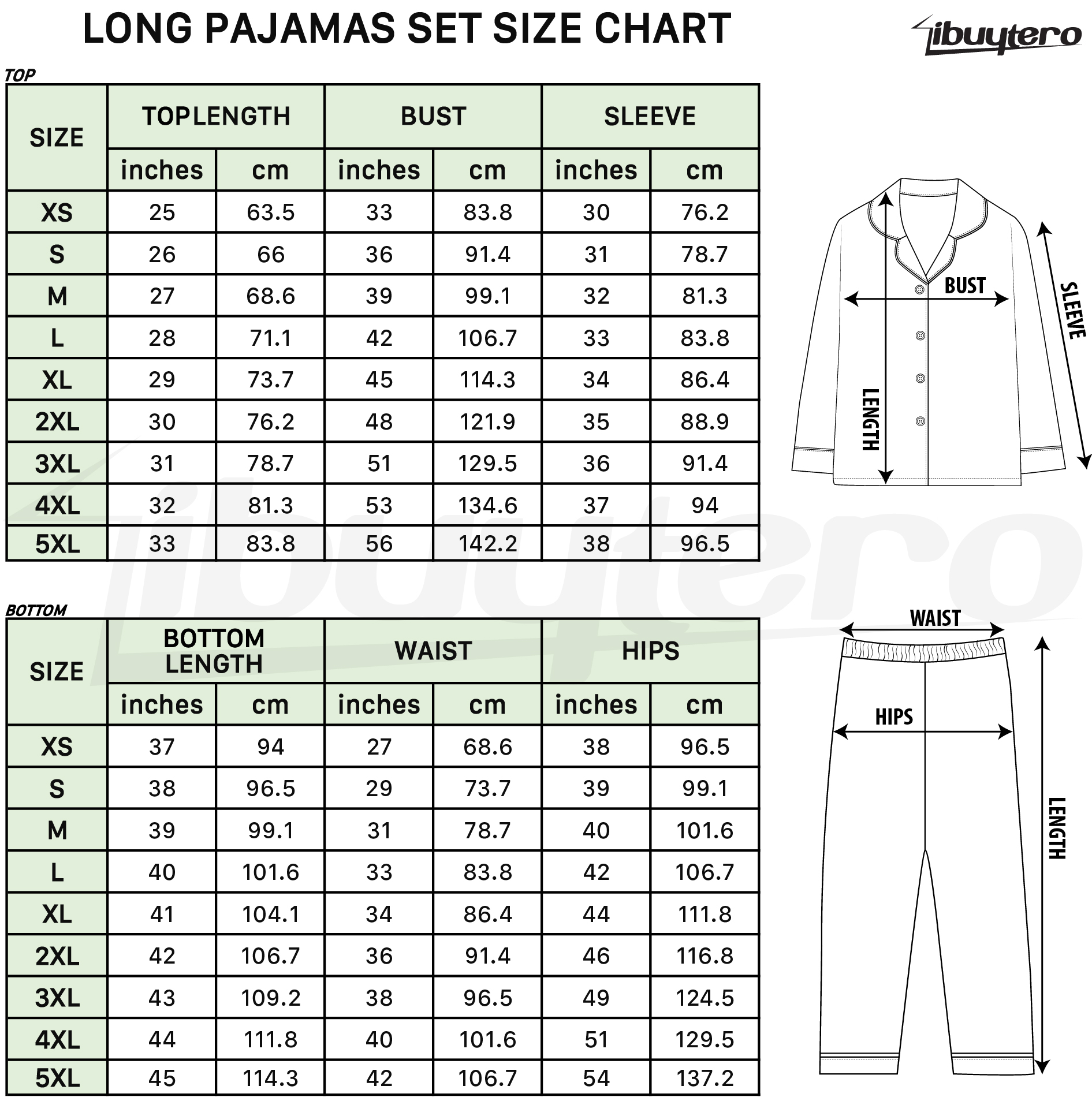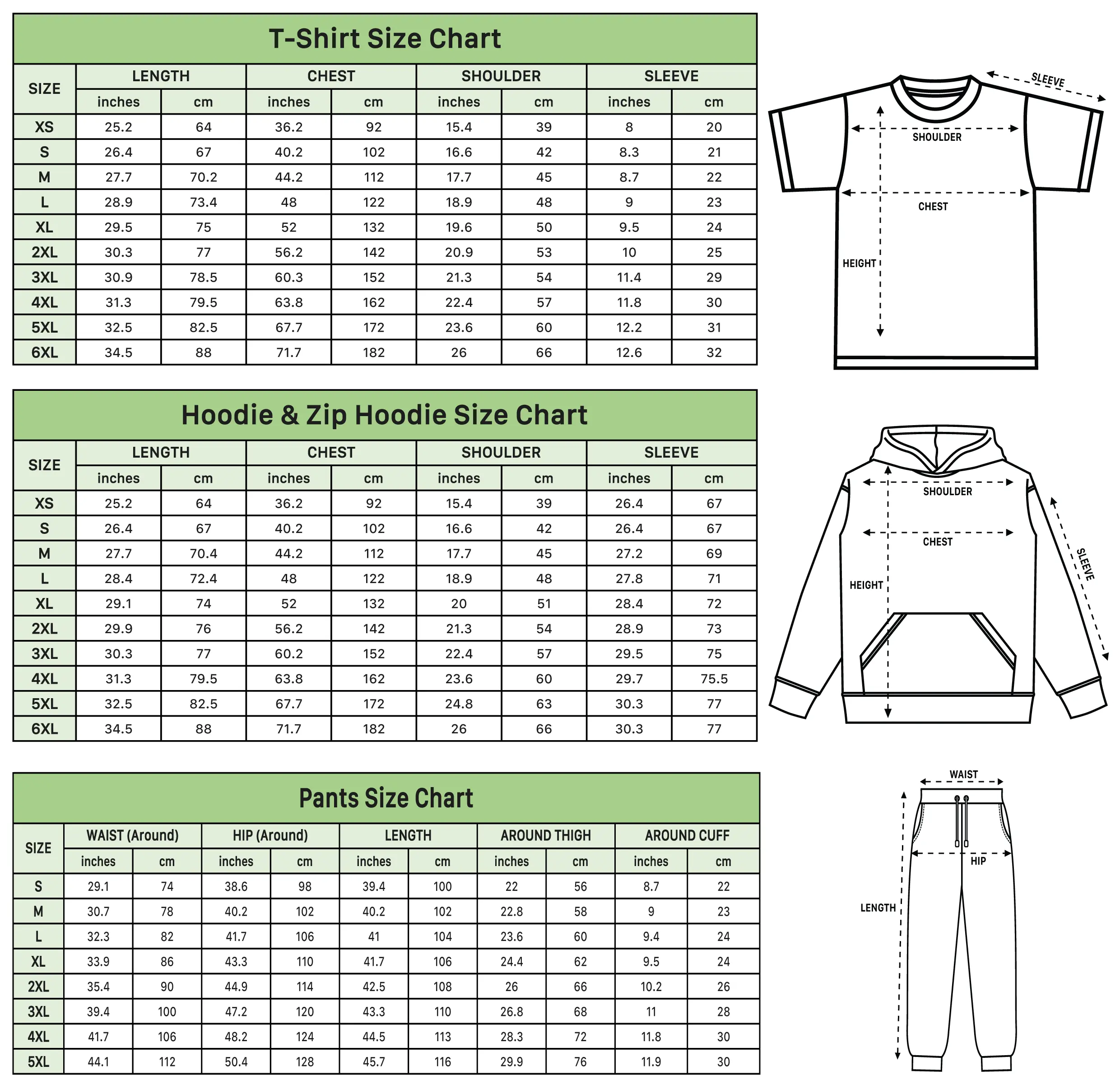Caring for Swim Trunks: Dos and don’ts
Caring for Swim Trunks is essential to ensure they remain vibrant and durable, swim after swim. Whether you’re lounging by the pool or riding the waves at the beach, your Swim Trunks go through a lot. By following a few simple dos and don’ts, you can extend their lifespan and keep them looking fresh. In this guide, we’ll cover the best practices for maintaining your Swim Trunks, so you can enjoy your aquatic adventures without worry.
I. Care tips for your Swim Trunks
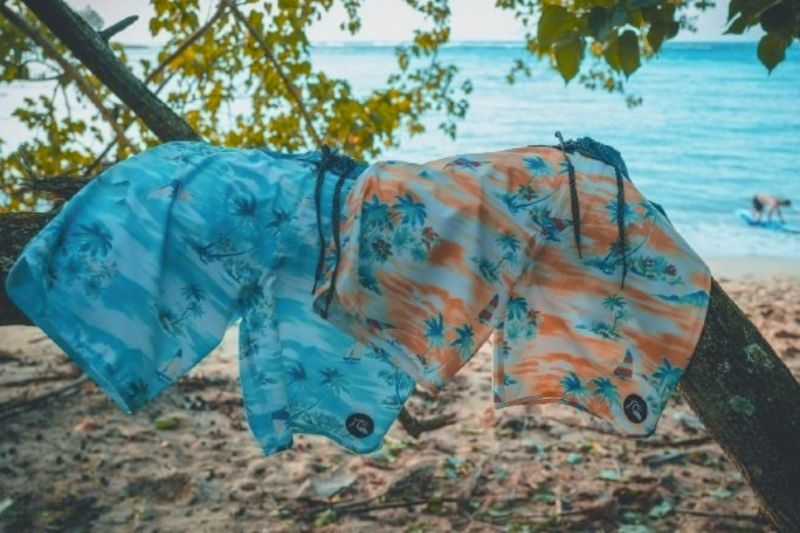
1. Rinse immediately after use
Importance: After swimming, especially in chlorine-treated pools or salty ocean waters, your Swim Trunks are exposed to chemicals that can damage the fabric. Chlorine can break down elastic fibers and cause colors to fade, while salt can stiffen the fabric and lead to discoloration. Rinsing your Swim Trunks immediately helps to remove these substances, preventing long-term damage and preserving the fabric’s integrity.
Detailed steps:
- Step-by-step: As soon as you exit the water, rinse your Swim Trunks under fresh, cool water. Ideally, this should be done at a rinse station provided at pools or beachside showers. If you are not near a rinse station, use a bottle or container of fresh water to rinse off excess chlorine or salt. Aim to rinse the trunks thoroughly to ensure that all residues are removed.
- Techniques: Gently rub the fabric with your hands during the rinsing process. This action helps to dislodge any chlorine or salt that might be embedded in the fibers. Avoid using high-pressure water, as this can be harsh on the fabric. Pay special attention to areas where the fabric might have bunched up or where residues are more likely to accumulate, such as the waistband and seams.
- Tips: Carry a portable, compact water container when you go swimming, especially if you’re often at locations without rinse facilities. This ensures you can rinse your Swim Trunks as soon as possible. If you must store wet trunks temporarily, place them in a breathable mesh bag to allow for ventilation and to avoid mildew growth.
- Additional advice: If immediate rinsing isn’t possible, try to shake off excess salt or chlorine and then rinse them thoroughly as soon as you can. Avoid leaving them in a damp, closed environment where mildew can develop.
2. Hand wash with mild detergent
Importance: Swim trunks are made from synthetic materials that can be sensitive to harsh chemicals and high temperatures. Regular laundry detergents, bleach, and fabric softeners can damage the fabric, weaken its elasticity, and lead to color fading. Hand washing with a mild detergent designed for delicates ensures a gentle clean while preserving the material’s properties.
Detailed steps:
- Step-by-step: Fill a basin or sink with cool water and add a small amount of mild detergent specifically designed for delicate fabrics. Avoid using regular laundry detergents, as they can contain harsh chemicals that might damage your Swim Trunks. Submerge the Swim Trunks in the soapy water and allow them to soak for about 10 to 15 minutes. This soaking process helps to loosen any dirt or residues from the fabric.
- Techniques: Gently agitate the water with your hands to ensure the detergent is evenly distributed and to help clean the fabric. Avoid wringing or twisting the Swim Trunks, as this can stretch and distort the fabric. For stubborn stains, you can make a paste of detergent and water, apply it to the stain, and gently rub with your fingers.
- Tips: Use a detergent that is free of dyes, fragrances, and bleach to avoid any irritation or alteration to the fabric’s properties. Always check the ingredients list to ensure compatibility with your swimwear.
- Additional advice: If hand washing isn’t feasible, consider using a mesh lingerie bag and a gentle cycle in your washing machine. Ensure the water temperature is set to cold or lukewarm, and select a delicate or hand wash cycle.
3. Air dry in the shade
Importance: Drying Swim Trunks in a dryer or under direct sunlight can cause significant damage. The high heat from a dryer can shrink the fabric and damage the elastic components, while direct sunlight can fade colors and weaken the fibers. Air drying in the shade helps to maintain the shape, color, and elasticity of your Swim Trunks.
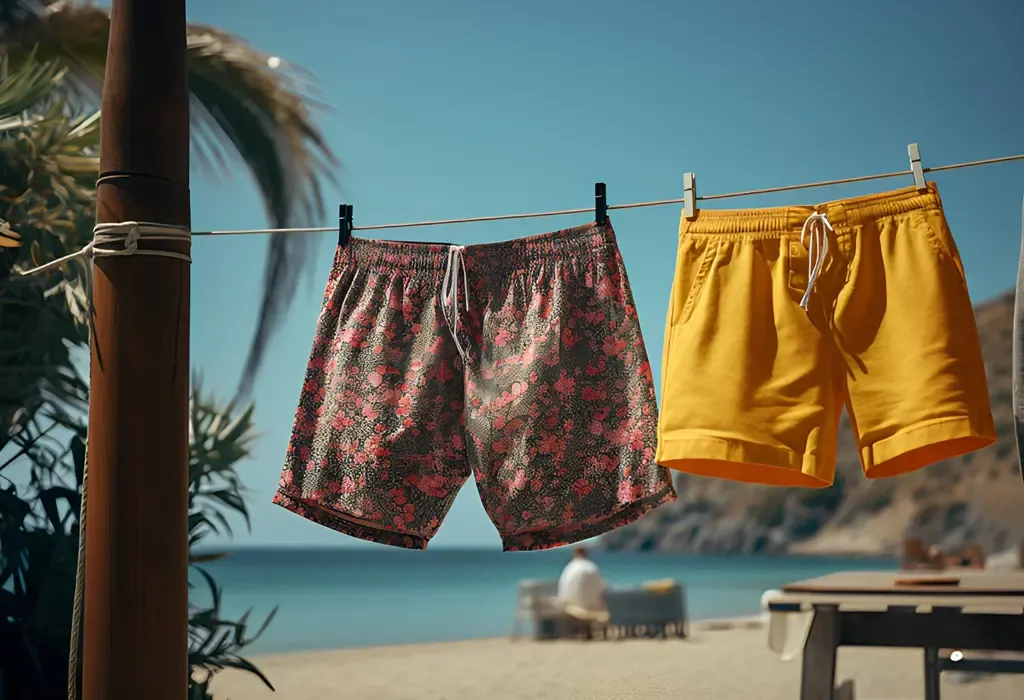
Detailed steps:
- Step-by-step: After washing, gently lay your Swim Trunks flat on a clean, dry towel or hang them up in a shaded area with good airflow. Ensure they are spread out and not bunched up to help them maintain their original shape. Avoid using clothespins or hangers that might distort the fabric.
- Techniques: To speed up drying, you can lay the Swim Trunks flat on a towel and roll the towel to absorb excess moisture. Alternatively, hang them on a rack or line in a shaded area with good ventilation. Ensure that the drying area is free from direct sunlight and heat sources.
- Tips: Use a drying rack or a well-ventilated area to avoid any risk of sun damage. For quicker drying in humid conditions, consider using a small fan to increase airflow.
- Additional advice: If you need to store Swim Trunks while traveling, ensure they are thoroughly dry before packing them away to prevent mildew. Consider packing them in a breathable garment bag to protect them during transit.
4. Follow care label instructions
Importance: The care label on your Swim Trunks provides specific instructions based on the materials used. Following these instructions is crucial for maintaining the swimwear’s quality and ensuring its longevity. Ignoring care label recommendations can lead to improper cleaning, damage, and reduced performance.
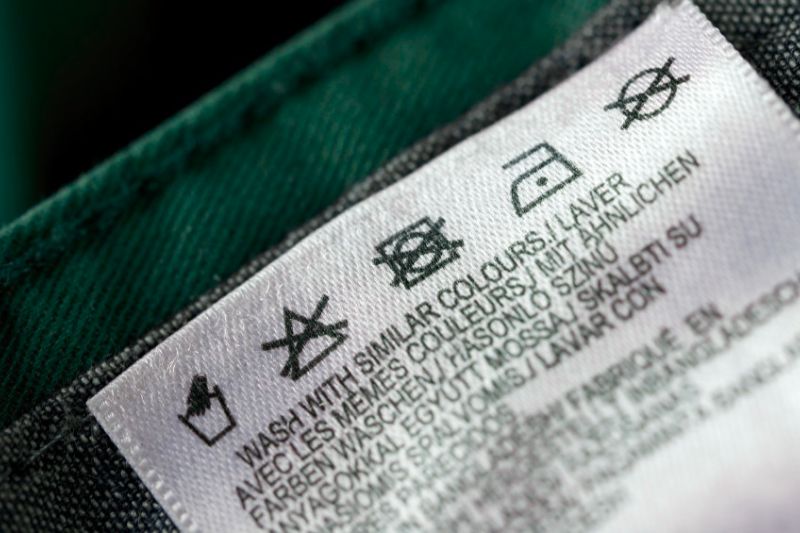
Detailed steps:
- Step-by-step: Read the care label attached to your Swim Trunks before washing or drying them. The label typically provides information about recommended washing temperatures, drying methods, and any specific care requirements. Follow these guidelines to ensure the best results and preserve the swimwear’s condition.
- Techniques: If the care label suggests hand washing or using specific detergents, adhere to those recommendations. Some labels may also include warnings about avoiding certain types of damage, such as exposure to high heat or abrasive surfaces.
- Tips: If the care label is unclear or difficult to read, refer to general guidelines for similar fabrics and avoid common mistakes like using bleach or high heat. You can also contact the manufacturer for clarification if needed.
- Additional advice: Keep a digital or physical record of care instructions for each pair of Swim Trunks, especially if you have multiple pairs with different care needs. This can help you remember specific details and avoid potential mistakes.
5. Rotate your swimwear
Importance: Regularly rotating your Swim Trunks helps distribute wear and tear evenly across multiple pairs. Wearing the same pair repeatedly can cause excessive strain on the fabric and elastic components, leading to faster deterioration. Rotating between pairs helps extend their lifespan and ensures that each pair remains in good condition.
Detailed steps:
- Step-by-step: Invest in several pairs of Swim Trunks to create a rotation system. Ideally, have at least two or three pairs that you alternate between each time you swim. This reduces the frequency of wear on any single pair and helps them recover from use.
- Techniques: Plan your swimwear rotation based on your swimming schedule. For example, use one pair for daily swim sessions and another for beach outings or water sports. Avoid using the same pair for different activities to prevent excessive wear.
- Tips: Store Swim Trunks in separate compartments or areas to keep track of which pairs are in use and which are resting. This organization helps maintain their freshness and reduces the risk of mixing up worn and unworn pairs.
- Additional advice: Monitor the condition of each pair as you rotate them. Check for signs of wear and replace any that show significant damage or loss of elasticity. Keeping a few backup pairs ensures you always have swimwear available when needed.
6. Store properly
Importance: Proper storage is essential to prevent damage from moisture, mold, and environmental factors. Storing Swim Trunks in a dry, cool place helps maintain their condition and ensures they are ready for use when needed. Improper storage can lead to mold growth, mildew, and deterioration of the fabric.
Detailed steps:
- Step-by-step: Store your Swim Trunks in a clean, dry location away from direct sunlight and moisture. Avoid leaving them in damp conditions, such as a gym bag or bathroom. Use a breathable garment bag or keep them in a dry drawer or closet.
- Techniques: For long-term storage, consider using moisture-absorbing packets or anti-mildew bags to keep the environment dry. Ensure that the storage area is well-ventilated and free from any sources of dampness or high humidity.
- Tips: If you are storing Swim Trunks for the off-season, make sure they are completely clean and dry before putting them away. Regularly check the storage area for any signs of dampness or mold.
- Additional advice: If traveling, pack Swim Trunks in a breathable mesh bag to prevent moisture buildup. Avoid packing them in sealed plastic bags that can trap moisture and lead to mildew.
7. Check for damage regularly
Importance: Regular inspections of your Swim Trunks allow you to identify and address minor issues before they become significant problems. Early detection of wear and tear helps prevent further damage and extends the lifespan of your swimwear.
Detailed steps:
- Step-by-step: Periodically examine your Swim Trunks for signs of damage such as frayed edges, loose threads, or worn areas. Check the elastic bands, seams, and fabric for any signs of deterioration or stretching.
- Techniques: Inspect Swim Trunks after each use, especially if they have been subjected to rough surfaces or intense activities. Address any issues promptly by making necessary repairs or replacing damaged swimwear.
- Tips: Keep a small sewing kit or repair kit on hand for minor fixes such as loose threads or small tears. For more significant damage, consider consulting a professional tailor or replacing the Swim Trunks if needed.
- Additional advice: Regularly review the condition of all your swimwear to ensure that none are overlooked. Maintain a routine check-up schedule, especially before the start of the swim season, to ensure all pairs are in good condition.
II. The pitfalls to avoid
1. Avoid harsh detergents andchemicals
Why it’s important: Harsh detergents and chemicals can damage the delicate fibers of Swim Trunks, leading to weakened fabric, reduced elasticity, and color fading. Using inappropriate cleaning agents can diminish the swimwear’s performance and lifespan.
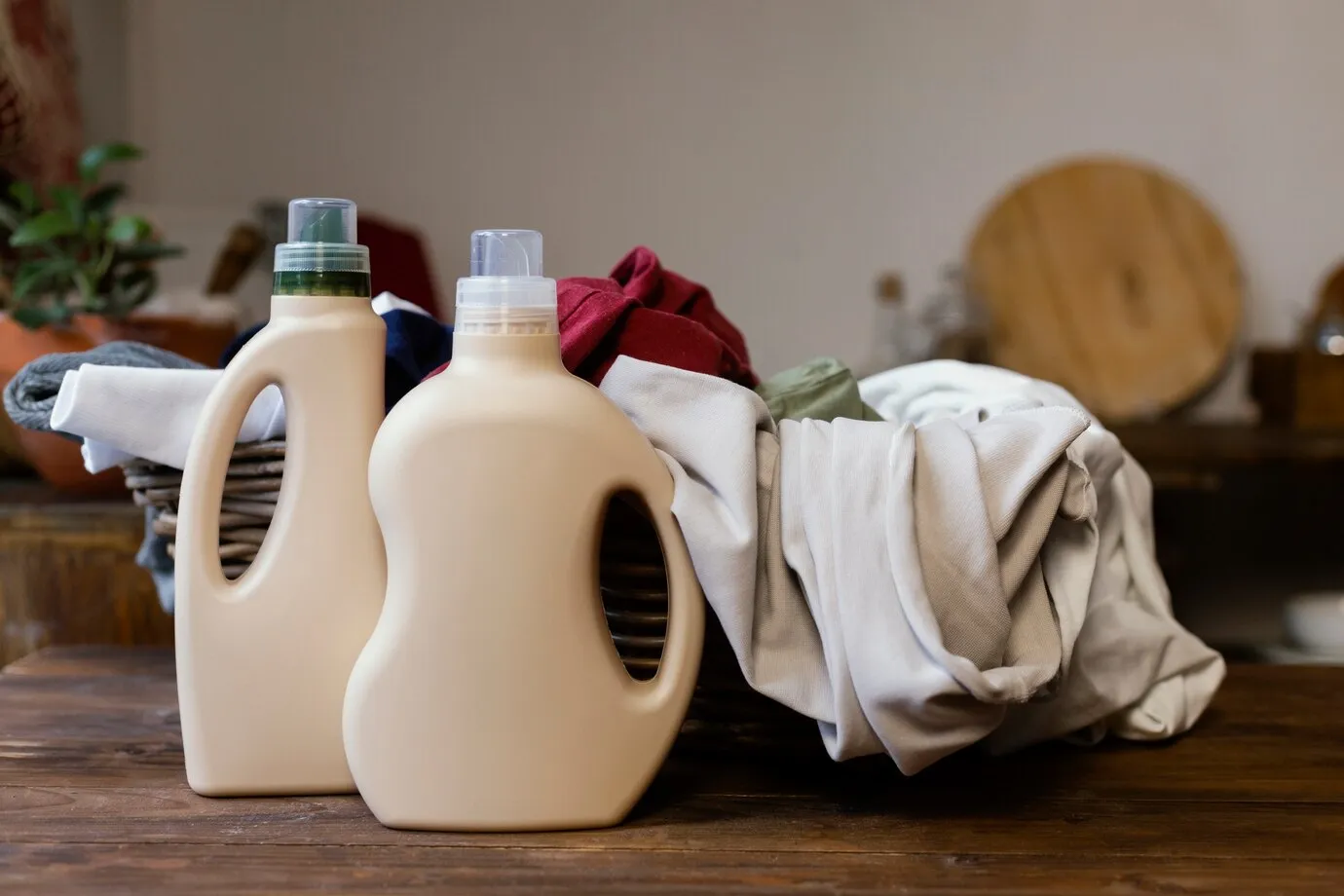
Detailed steps:
- Step-by-step: Choose a detergent specifically formulated for delicates or swimwear. These detergents are designed to clean without causing damage. Avoid using regular laundry detergents that may contain strong chemicals or additives.
- Techniques: Look for detergents that are free of dyes, fragrances, and bleach. These ingredients can irritate the skin and damage the fabric. Test the detergent on a small, inconspicuous area of the Swim Trunks if unsure.
- Tips: If you have sensitive skin or allergies, select hypoallergenic detergents that are free from common allergens. Use the recommended amount of detergent to avoid overuse, which can leave residue on the fabric.
- Additional advice: Consider using gentle, eco-friendly detergents that are both effective and less harmful to the environment. These detergents often have fewer chemicals and are designed to be more fabric-friendly.
2. Skip the dryer
Why it’s important: Dryers use high heat that can cause Swim Trunks to shrink, warp, or lose their elasticity. The heat can also damage the synthetic fibers, reducing their durability and affecting the fit and comfort of the swimwear.
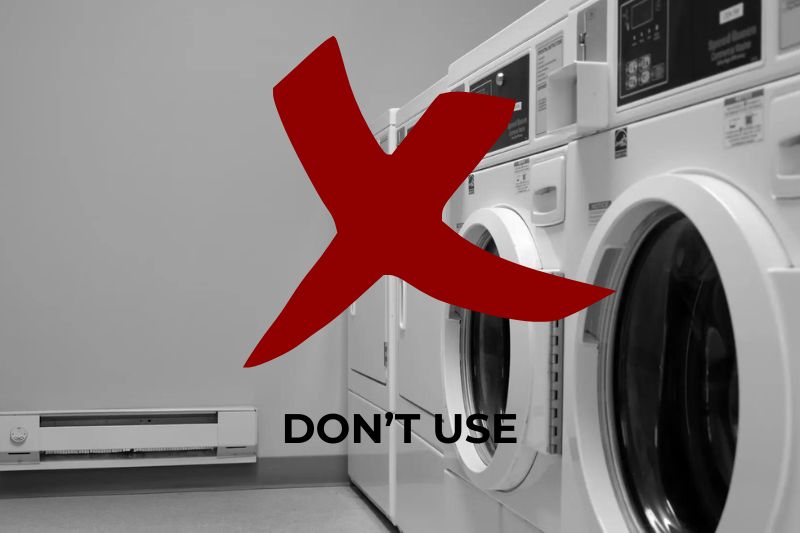
Detailed steps:
- Step-by-step: After washing, avoid placing Swim Trunks in the dryer. Instead, lay them flat on a clean towel or hang them up to air dry. Ensure they are spread out evenly to maintain their shape and prevent stretching.
- Techniques: Use a drying rack or hang the Swim Trunks in a shaded, well-ventilated area. Avoid direct sunlight or heat sources, as these can further damage the fabric.
- Tips: If drying outdoors, choose a shaded spot to protect the colors and fabric. For indoor drying, ensure the area has good airflow to speed up the drying process.
- Additional advice: If you need to dry Swim Trunks quickly, use a fan or air circulator to improve airflow around them. Avoid any direct heat sources, such as radiators, which can cause additional damage.
3. Avoid rough surfaces
Why it’s important: Rough surfaces can cause abrasion and damage to Swim Trunks. Sitting or lounging on coarse or uneven surfaces can lead to fabric wear, fraying, and even tears. Preventing contact with rough textures helps maintain the integrity of your swimwear.
Detailed steps:
- Step-by-step: When using your Swim Trunks, always sit or lie on a smooth surface. Use towels, beach mats, or blankets to create a barrier between the fabric and rough surfaces such as concrete or rocky areas.
- Techniques: Choose clean, soft surfaces for lounging. Avoid placing Swim Trunks directly on abrasive materials that can cause damage. If lounging on a beach, shake off any sand or debris from towels or mats before use.
- Tips: Carry an extra towel or mat to ensure you always have a clean, smooth surface. Avoid using rough or dirty blankets that could transfer particles onto your Swim Trunks.
Additional advice: If you must sit on rough surfaces, consider wearing a cover-up or additional clothing to protect your Swim Trunks from direct contact. Regularly inspect Swim Trunks for signs of abrasion and address any issues promptly.
4. Don’t leave wet or damp
Why it’s important: Leaving Swim Trunks in a damp state can lead to mold, mildew, and unpleasant odors. Proper drying and storage are crucial to prevent these issues and ensure that your swimwear remains fresh and ready for use.
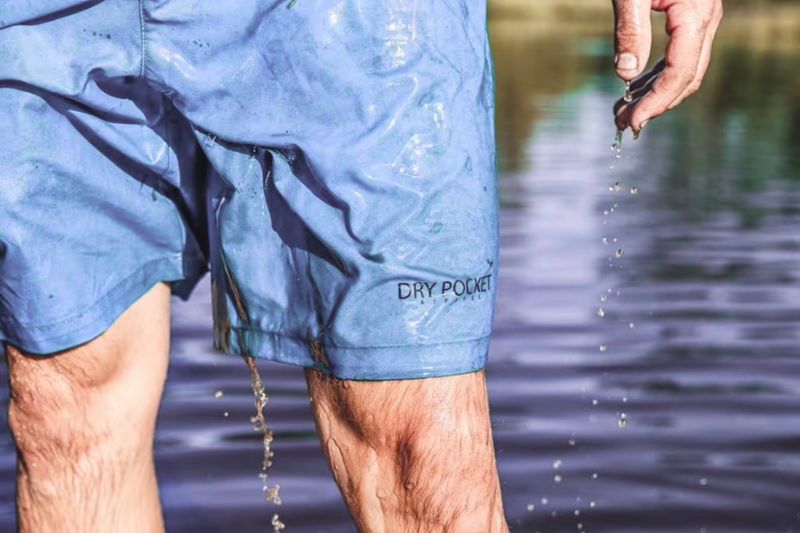
Detailed steps:
- Step-by-step: After washing or swimming, ensure that Swim Trunks are thoroughly dried before storing them. Do not leave them in a damp towel or plastic bag, as this can create an environment conducive to mold and mildew growth.
- Techniques: If immediate drying is not possible, hang Swim Trunks in a well-ventilated area to allow air circulation. Avoid storing them in closed, damp spaces.
- Tips: Use a portable drying rack or quick-dry towel to absorb excess moisture if needed. For longer-term storage, consider moisture-absorbing packets or anti-mildew bags.
- Additional advice: If storing Swim Trunks while traveling, pack them in a breathable mesh bag or dry compartment to prevent mildew. Regularly check for signs of dampness or mold and address any issues immediately.
5. Refrain from ironing
Why it’s important: The heat from an iron can melt the synthetic fibers in Swim Trunks, leading to permanent damage. Ironing can also affect the elasticity and fit of the swimwear, making them less comfortable and functional.
Detailed steps:
- Step-by-step: Do not attempt to iron Swim Trunks. Instead, use alternative methods to address wrinkles, such as hanging them in a steamy bathroom or using a fabric steamer from a safe distance.
- Techniques: For minor wrinkles, hang Swim Trunks in a bathroom while you take a hot shower. The steam will naturally smooth out creases without direct heat.
- Tips: Fold Swim Trunks carefully after washing and avoid over-packing them to reduce wrinkles. If you must travel with wrinkled swimwear, unpack and hang them up as soon as possible.
- Additional advice: If you have a fabric steamer, use it on a low setting and keep it at a distance to remove wrinkles without damaging the fabric. Avoid any direct contact with the hot steam.
6. Avoid wearing for non-aquatic activities
Why it’s important: Swim Trunks are designed for water-related activities and are not meant for everyday wear. Using them for non-aquatic activities can lead to unnecessary wear and tear, affecting their performance and appearance.
Detailed steps:
- Step-by-step: Reserve Swim Trunks for their intended purpose—swimming, beach outings, and water sports. Avoid using them as casual shorts or for activities that might cause excessive wear.
- Techniques: Choose appropriate clothing for non-water activities to preserve the integrity of your Swim Trunks. This prevents additional stress and damage.
- Tips: Maintain separate wardrobes for swimwear and casual wear. Use cover-ups or casual shorts designed for everyday use when transitioning between different activities.
- Additional advice: If Swim Trunks are accidentally used for non-aquatic purposes, follow all care instructions diligently to mitigate potential damage. Regularly assess their condition and replace them if needed.
7. Don’t use fabric softener
Why it’s important: Fabric softeners leave a residue that can affect the performance of Swim Trunks. This residue can impair moisture-wicking properties and reduce the elasticity of the fabric, compromising comfort and functionality.
Detailed steps:
- Step-by-step: Avoid using fabric softeners when washing Swim Trunks. Opt for mild detergents that are free of additives and designed specifically for delicates or swimwear.
- Techniques: Choose detergents without fabric softener ingredients. Read product labels carefully to ensure compatibility with swimwear materials.
- Tips: If you prefer a scent, select detergents with natural fragrances that do not interfere with the fabric’s properties. Avoid using any additives that could leave residues.
- Additional advice: Consider using a washing machine’s delicate cycle if available, as it often requires less agitation and can be gentler on swimwear. Avoid adding any extra cleaning products that could impact the fabric.
III. Conclusion
Maintaining your Swim Trunks involves a series of careful steps to ensure their longevity, performance, and appearance. By following these detailed dos and don’ts, you can keep your swimwear in excellent condition and ready for every aquatic adventure. Rinse them immediately after use, hand wash with a mild detergent, and air dry them in the shade to prevent damage. Avoid harsh chemicals, dryers, and rough surfaces, and adhere to care label instructions for the best results. Implementing these comprehensive guidelines will help preserve the quality and functionality of your Swim Trunks, ensuring that each swim is enjoyable and comfortable.
You can explore more about Hawaiian Islands, Hawaiian Shirts and Swim Trunks to discover their unique styles, history, and tips for choosing the right one for you. For a wide range of stylish options, visit Teroprints Shop, where you’ll find a collection of Swim Trunks and Hawaiian Shirts that are perfect for any occasion.
Don’t forget to stay connected with Teroprints on Instagram, Pinterest, and Facebook to keep up with our latest product releases and updates. Follow us for the newest trends and exclusive deals!
You can refer to the articles below for more helpful information:
- What is the difference between Boardshorts and Swim Trunks?
- Why do swim trunks have a mesh lining?
- How to choose the right swim trunk length for your body type





